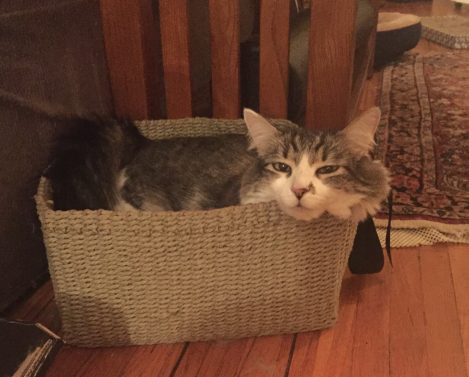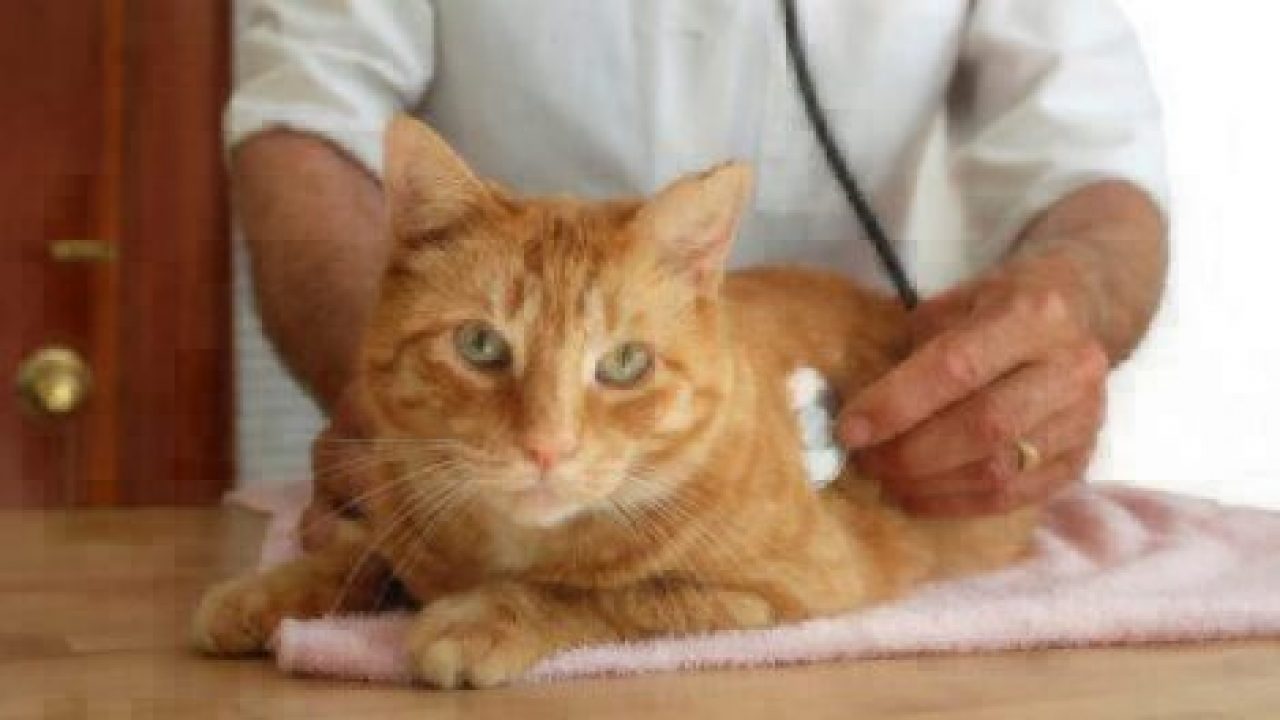Key Takeaways
- Cats can get UTIs that are uncomfortable and painful.
- UTIs occur when bacteria contaminates the urethra and moves up to the bladder.
- Symptoms of UTIs in cats are painful and frequent urination, blood in urine, and lethargy.
- Urinary tract blockages are even more serious and even life-threatening.
- Antibiotics may be needed to treat a cat’s UTI.
Table of Contents
Just like humans, cats can experience urinary tract infections (UTIs) that are uncomfortable and sometimes even painful. In fact, it’s one of their most common ailments! Being quick to recognize and treat a cat’s UTI reduces pain and potential complications, which is priority number one. Promptly treating UTIs also prevents cats from urinating outside of the litter box, which can be tricky to clean up.
Today, we’re breaking down what a UTI is, outlining the most common signs of UTIs in cats, and giving you the rundown for how to treat a cat’s UTI. We’re also going to talk about urinary tract blockages (UTB).
What is a UTI?
A UTI is an infection that typically occurs when bacteria (most commonly E. coli) contaminate the urethra and then migrate upward into the bladder. In the bladder, the bacteria replicate quickly and can cause an infection that leads to symptoms like burning, itching, and pain in the genital area.
UTIs can also be caused by bladder stones or crystals that irritate the bladder wall and increase the risk of infection.
Generally, UTIs are wrapped up into the term FLUTD, which stands for “feline lower urinary tract disease.” This term, which also includes UTBs, describes a group of diseases that affect the bladder and urethra.
Female cats are at a high risk of UTIs because their urethra is shorter and wider than that in male cats.
What are the Symptoms of UTIs in Cats?
Obviously, your cat cannot communicate via words to tell you what’s going on with their health, so it’s important to look for other signs. Common signs of feline UTIs are listed below:
- Abnormal, frequent passage of urine
- Inability to urinate or only passing a small amount of urine
- Urinating in inappropriate locations (like the bathtub or the closet) and litter box avoidance (Check out these tips for effectively cleaning cat urine, along with other reasons why cats pee outside the litter box.)
- Difficult or painful urination
- Blood in the urine
- Loss of bladder control (dribbling urine)
- Straining or crying out in pain when trying to urinate
- Prolonged squatting in the litter box
- Constant licking of genital area
- Lethargy
- Vomiting
- Drinking a noticeably larger amount of water
On a physical examination, your vet will look for the symptoms listed below:
- Hard, distended abdomen
- Blockage of urine flow through the urethra to the outside the body
- Thickened, firm, and contracted bladder wall
Be aware that the symptoms listed above can be seen with other urinary tract conditions. However, the presence of these symptoms suggests a strong possibility of a UTI. Prompt diagnosis and treatment of UTIs is crucial because, if left untreated, a UTI can have serious consequences, such as a kidney infection, and make cats very ill.
Is it a UTI or a UTB (Urinary Tract Blockage)?
Let’s pause for a moment to talk about UTBs. Nope, a “UTB” isn’t code for “under the bed.” A UTB, sometimes called a urinary tract obstruction, occurs when the urethra becomes blocked by substances like minerals that inflame the urethra. When the urine can’t exit the body, the bladder gets overfilled and can eventually rupture. UTBs are far more common in male cats than female cats.

A UTB is serious and life-threatening. The symptoms begin much like a UTI but quickly progress. A blockage can be fatal if not treated immediately.
When pet parent Karen noticed that her cat Colin wasn’t feeling well, she brought him into her regular vet not once, but twice, and they still didn’t diagnose him accurately. It wasn’t until she took him to the emergency hospital that Colin was diagnosed with a UTB, which was probably formed by crystals in his bladder.
After diagnostic tests and x-rays, vets could see that Colin needed emergency surgery to remove the blockage, which totaled $3,800, of which Karen was reimbursed $3,100. “He’s doing great now!” says Karen. “He was still groggy and in some pain for a few days after he got home, but now he has more energy than ever. Always running around and playing with his brother. Singing at the top of his lungs at 5am. All that good stuff.”
UTBs are diagnosed with a thorough physical exam, which involves feeling a cat’s abdomen, a full blood panel to monitor levels of increased waste products, X-rays to look for blockages, and possibly a urine culture if a UTI is suspected.
UTBs are a medical emergency and require immediate surgical treatment. After surgery, treatment includes pain medication and dietary changes to prevent another blockage.
Why Do Cats Get UTIs?
Although bacteria are a common culprit of UTIs in cats, they are not the only cause. For example, interstitial cystitis (painful bladder syndrome) and certain viruses can cause UTIs. Other causes and risk factors are listed below:
- Congenital abnormality
- Stones or accumulated debris in the bladder or urethra
- Kidney stones
- Bladder crystals
- Poor diet
- Incontinence or weak bladder
- Injured urinary tract or spinal cord
- Stress
- Endocrine diseases (specifically, hyperthyroidism and diabetes)
How is a Cat UTI Diagnosed?
Schedule an appointment with your veterinarian immediately if you suspect that your cat has a UTI. To diagnose your cat’s UTI, your vet will first complete a physical exam, then perform a series of diagnostic tests, including bloodwork and a urinalysis. From there, your vet may perform additional tests, such as a urine culture to look for bacteria and abdominal x-rays or ultrasound to look for stones and crystals.
These tests will help your vet determine the underlying cause of the UTI and identify negative health consequences caused by the UTI.
How Do You Treat a Cat UTI?
Treatment varies depending on the diagnosis. Bacterial infections will require antibiotics. Other treatment options include pain medication, dietary changes to prevent the formation of stones and crystals, and surgery to remove bladder stones. Be aware that stones and crystals can recur, so your cat may need lifelong prevention from stone and crystal formation.
If your cat has a bacterial UTI, your vet will perform a repeat urinalysis after antibiotic treatment to make sure that the infection has cleared.
Trust us — your cat will feel so much better with treatment. They’ll be so grateful that you took them in to get treated!
How Can I Prevent Future UTIs?
UTIs are no fun for your cat. They aren’t 100% preventable, but there a few things you can do to minimize your cat’s risk of getting another UTI. For example, you can feed your cat more canned food to encourage more water intake. You can also keep the litter box clean and keep it in a quiet and private environment.
Taken together, UTIs are uncomfortable and painful for cats. Keep a close tab on your cat’s bathroom habits and schedule an appointment with your vet if you notice any symptoms related to UTIs or UTBs. The quicker you notice the problem, the quicker your cat can get treated and back to normal.
Want to know more information on common cat illnesses? We break down cat health, treatments and veterinary innovation in our Cost of Pet Care report, so you can be prepared to take care of your furry friend every step of the way (and yep, Healthy Paws covers UTI treatment).
The content is not intended to be a substitute for professional veterinarian advice, diagnosis, or treatment. Always seek the advice of your veterinarian or other qualified health provider with any questions you may have regarding a medical diagnosis, condition, or treatment options.







